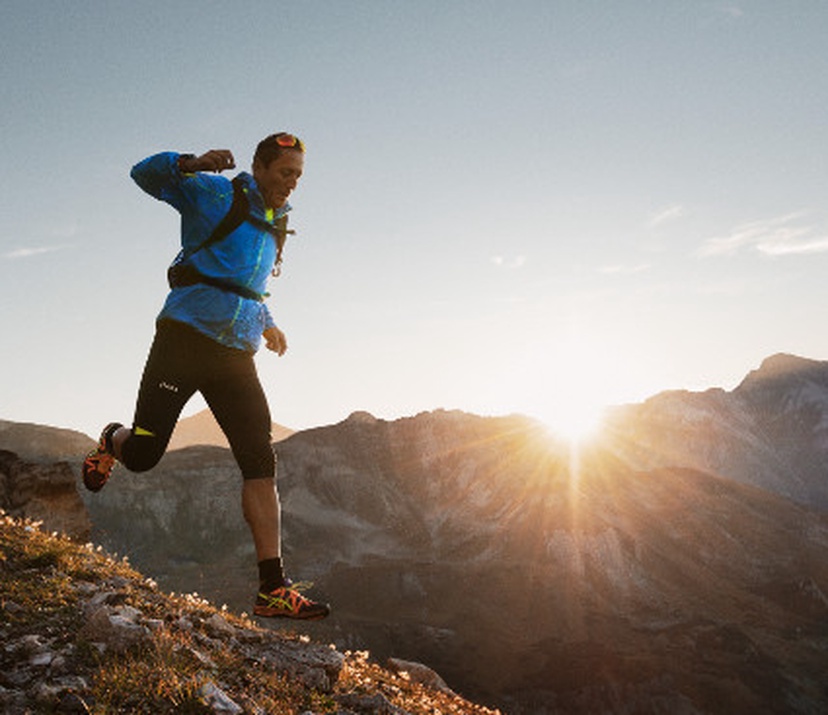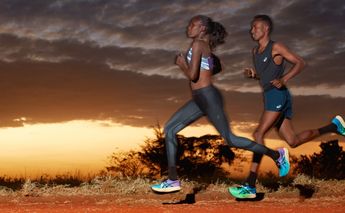Trail running puts different demands on your running technique. Extreme runner Christian Schiester explains how to best use your physical and mental energy to pace yourself on rough terrain.
Setting your pace in a trail race
A trail running race has the same objective as a road race – you’ll want to cover the distance from start to finish as fast as possible.
But when you’re taking on trails, you’ll need to think differently about how you set your pace when compared to road running.
“The big challenge is adjusting your pace to the conditions underfoot,” explains Austrian trail expert and ASICS ambassador Christian Schiester.
“You have to run evenly and be fully focussed to avoid getting injured.”
Schiester has conquered some of the most extreme trails in the world, including treks through the Himalaya mountains, the Amazon forests and the Sinai desert.
Running through such awe-inspiring environments is what makes trail running special, and impossible to compare to road running.
“Average kilometre times are irrelevant in trail running. It's much more about the experience of powering yourself through nature,” says Christian.
Focus on the course
Generally speaking, when you’re running on road you don’t need to pay too much attention to the course. It means you can focus on speed and performance.
Trail races are the exact opposite. It’s all about the course, and the terrain demands your complete attention.
“Focussing fully on the course is much more important than would be the case in road running,” says Christian.
It's only on the more level and open parts of a course that a trail race resembles a road race.
“At those points where I can see very well ahead or where conditions underfoot allow for a fast and rounded running step – that’s when you can really make time.”
Most of the time, though, trail running courses are much more arduous. As Schiester explains it, they require a delicate balance between physical speed and mental focus.
“The challenge for trail runners lies in precisely distributing your physical and mental energy,” says Christian.
Learn about making the switch from road to trail running
Uphill versus downhill
Distributing your energy effectively in a trail race means adjusting your pace for uphill and downhill stretches. It goes without saying that running up steep slopes poses different challenges for keeping your speed than a downhill slope.
“My strategy is simple,” says Christian. “Full power uphill – focussed and considered downhill.
“When you’re going uphill, take short, even steps and make sure you breathe deeply. That’s the best way to conserve energy.
“Going downhill is the most dangerous type of running in my opinion. Just one misstep could result in serious injury. That’s why you really need to check your pace and put all your focus on the terrain before you.”
Monitoring your pace and location
Despite the natural surroundings, trail running is a high-tech sport. For Christian, his race day equipment includes a handheld GPS device, and of course water and energy foods to last him through the day.
“There are now fantastic trail running backpacks from ASICS that fit well to your body and hold enough food and drink for your run,” he says.
“During a course I'm always able to access data using my handheld. Modern technology makes it simple to precisely check my pace”
Another reason to carry a handheld device is to make sure you stay on the right track. With so many different paths and often unfamiliar terrain, this is an essential feature of trail running.
“I’ve always got my GPS at hand and I always save other landmarks in the device, in addition to the course itself.”
Don’t rely on technology alone
Despite the race day gadgets, Christian is quick to warn against becoming dependent on them. That’s why he studies maps and landmarks of the trail courses he’s going to run.
He also tries to remember as much as possible from running them – partly for future use, and partly to make sure he fully experiences and enjoys his runs.
“I store every course as images in my head. These are images that I get to store in my brain day in day out through trail running. I collect these superb impressions of nature, impressions that will stay with me for the rest of my life!”
Are you an avid trail runner? Check out our trail accessories, including lightweight backpacks and bottle packs.



